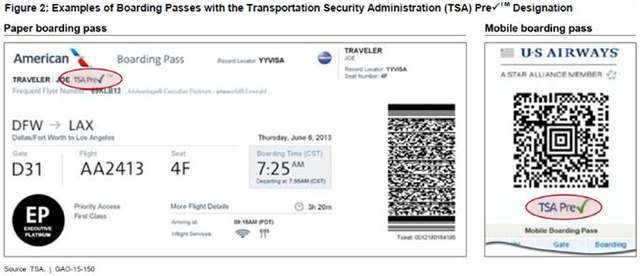Traveling Quickly but Safely This Summer
- TSA Pre✔TM allows passengers who are designated as low-risk to enjoy expedited screening—specifically, not having to remove their shoes, light outerwear, jackets, or belts, or not having to remove liquids, gels, or laptops from their carry-on bags for X-ray screening.

(Excerpted from GAO-15-150)
- TSA’s Managed Inclusion process randomly selects passengers who are not otherwise identified as high- or low-risk before their arrival at the airport to receive expedited screening using added layers of security, such as canine teams, behavioral detection officers, and explosives trace detection devices.

(Excerpted from GAO-15-465T)
We have found problems with TSA’s evaluation of some expedited screening programs. TSA has evaluated the security effectiveness of some parts of the Managed Inclusion process, and plans to evaluate the system as a whole. When we have reviewed its past evaluations, we have found that- TSA had not demonstrated that using behavioral indicators can reliably and effectively identify passengers who may pose a threat to aviation security, and
- TSA did not design suitable studies to test security effectiveness of its behavior detection programs, such as by ensuring adequate sample sizes or randomly selecting items in a study to ensure generalizable results.
- Sharp objects
- Sporting goods
- Guns and firearms
- Martial arts and self-defense items
- Tools
- Explosive materials
- Flammable items
- Disabling chemicals and other dangerous items
- Other items such as gel-type candles, flammable liquid, gel, or aerosol
- Questions on the content of this post? Contact Jennifer Grover at groverj@gao.gov.
- Comments on GAO’s WatchBlog? Contact blog@gao.gov.

GAO's mission is to provide Congress with fact-based, nonpartisan information that can help improve federal government performance and ensure accountability for the benefit of the American people. GAO launched its WatchBlog in January, 2014, as part of its continuing effort to reach its audiences—Congress and the American people—where they are currently looking for information.
The blog format allows GAO to provide a little more context about its work than it can offer on its other social media platforms. Posts will tie GAO work to current events and the news; show how GAO’s work is affecting agencies or legislation; highlight reports, testimonies, and issue areas where GAO does work; and provide information about GAO itself, among other things.
Please send any feedback on GAO's WatchBlog to blog@gao.gov.
